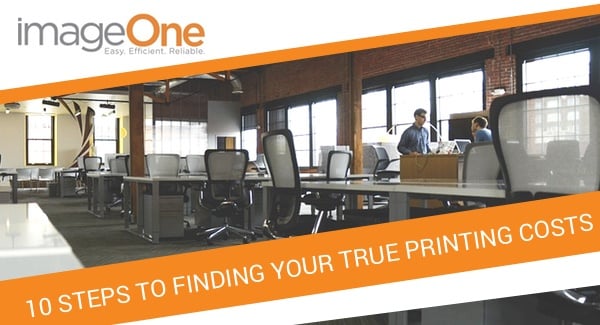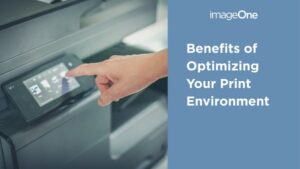If you’ve ever been shopping for a printer, I bet this question has popped into your mind, especially after comparing prices between ink cartridges and the printer itself:
“Why does replacement ink cost more than the actual home printer?!”
or
“How long will this printer actually work before it breaks?”
Then, after accepting the odd pricing, you take it home only to have your other worry become reality—the printer constantly has mechanical issues, and before long, needs to be replaced altogether.
It’s enough to make you wonder why these frustrating printer problems happen in the first place. After all, you’re likely using a home ink printer far less than those laser printers back at the office.
Sure. They can have problems too. But if busy businesses, government agencies, and larger organizations can use the same printers for years, why can’t our smaller at-home versions last as well?
Before answering these printer questions outright, it’s better to first understand how laser and ink printers work and the major differences between the two.
What is an Ink or Inkjet Printer?
An inkjet printer uses liquid ink stored in a cartridge to print images. If it is a black and white printer—also often called a mono printer—it will only have a black cartridge.
However, most ink or inkjet printers are color printers. Color inkjet printers contain black, cyan, magenta, and yellow ink cartridges. The printer will create an image on each page by injecting droplets of ink through nozzles to make tiny dots on the paper.
These dots are so small and spaced so closely together that the pictures or text look like a solid image. By combining these colored dots, they can be used to make every color within the color spectrum.
What is a Laser Printer?
A laser printer uses a very different process than an inkjet printer.
First, the image is created on a drum. This drum is then given a charge which applies around 600 volts to the drum with a static field and allows light enough objects to be attracted to the drum. Imagine it as similar to how hair floats towards a plastic comb after the comb has been rubbed dry on a sweater.
Next, a laser writes the image onto the drum. A roller covered in powdered ink, which is also called toner, then applies the toner to the drum’s surface. A static charge makes the toner stick to where the image should be on the drum. The toner is then transferred onto a piece of paper.
In the last step, the paper is fed through hot rollers, also called a fuser. The fuser acts like an iron to melt the toner onto the page and permanently set the image onto the paper. That’s why copies are warm to the touch when they come out of the printer.
In a color laser printer, each color that’s used within every printed image is individually transferred from the drum to a belt. The color is then overlaid over the previous color. This completes the image before it’s finally transferred onto the paper itself.
Why Are Ink Printers More Affordable?
The reason inkjet printers are so inexpensive is because the technology necessary to create the image is much simpler than what’s needed in a laser printer.
Essentially, for basic home use, inkjet printers can sufficiently get these more sporadic and lower-volume jobs done. However, this also means that they can’t keep up with more complex jobs without the potential of running into problems—if they can be done at all.
Aside from consumable supplies such as ink and paper, ink printers are not typically designed to be serviced or have their parts replaced. This helps to keep them cheap. However, manufacturers count on selling more replacement ink and pricing them high as they still want to make a profit in the long run.
The most common cause of failure in these printers occurs when the liquid ink dries in the nozzle and plugs them up. The second most common reason is when the plastic parts within the paper’s path break. Once this happens, most people choose to throw the entire printer out rather than try to find a way to repair it.
Not only does making these printers so disposable feel like a waste for consumers—it’s not good for the environment either. Unfortunately, trashed printers generate literal tons of e-waste every year leading to a less sustainable world.
Why Don’t Large Businesses Use Inkjet?
Most large organizations use laser printers because they are built for enterprise-level use meaning that they’re built to put up with the rigors of a business environment.
Laser printers are repairable, and the ink can’t plug up anything because it is a dry powder. They also easily support multiple users and can last up to more than a million pages in the printer’s lifetime.
But most significantly, a laser printer toner’s total yield is significantly greater than that of an ink cartridge. A typical ink cartridge will yield 250 to 300 pages depending on the color density of the prints. The yield of a typical toner cartridge in a laser printer is between 2,500 and 3,000 pages. Some larger laser printers can even have toners that will yield up to 30,000 pages!
In addition, modern printers are vulnerable to hackers. If exploited, they can be used as an easy jumping-off points to infiltrate your business’ network.
Enterprise-level laser printers support advanced network security protocols that protect companies from exposing sensitive data and prevent network access. Smaller printers typically don’t have these critical capabilities.
Those are just a few of the benefits of laser printers. Here are some more:
- The cost per page is considerably less expensive than ink printers
- They are durable and repairable
- They can be configured with security protocols to protect sensitive or proprietary information from being exploited by hackers
- The page yield per cartridge is thousands of times higher
- One laser printer can support a large group of users. This prevents the need for multiple small printers and the need to keep the ink on hand for them all.
- Disposable ink printers create e-waste and are not green
- Solutions can be installed to reduce printed pages and save paper and discarded prints
The bottom line is that laser printers are much more reliable, more efficient, easier to manage, and most importantly—they’ll ultimately save you money.
Want to learn more about which printer is right for you? Ready to purchase a new print, copy, or multifunction device? At imageOne, we’re experts at optimizing your print environment and finding the perfect machine for you.
We’ll also show you smart cost-saving solutions, green print initiatives, and great equipment that will maximize your satisfaction and eliminate print frustrations. Schedule a free, no-strings-attached consultation today! We can’t wait to work with you.


.jpg)



